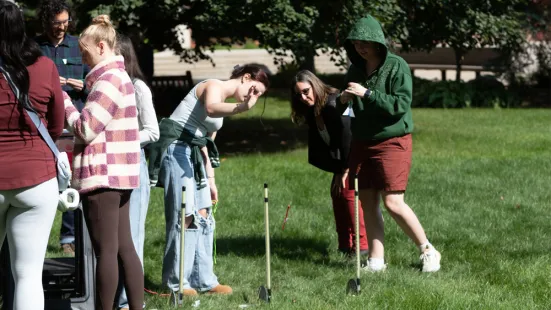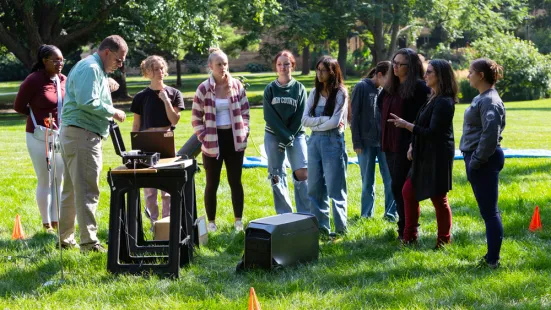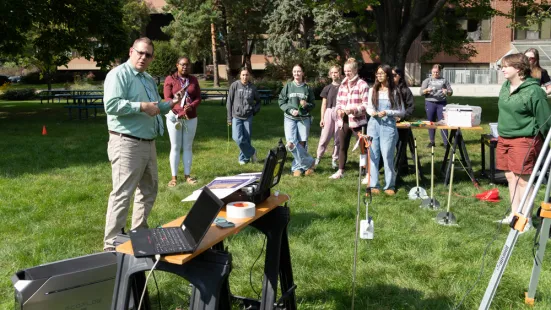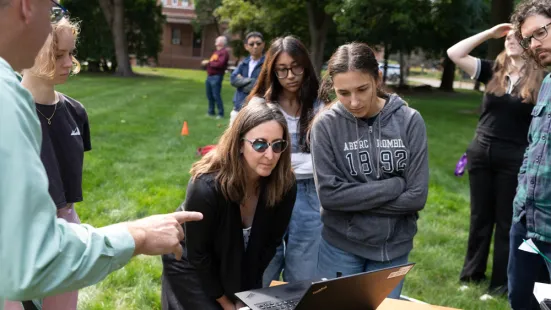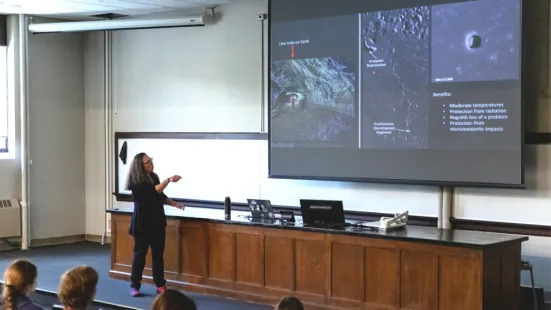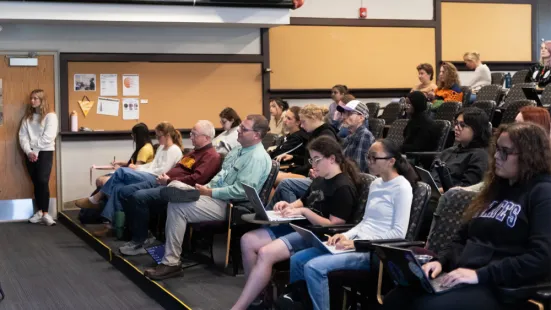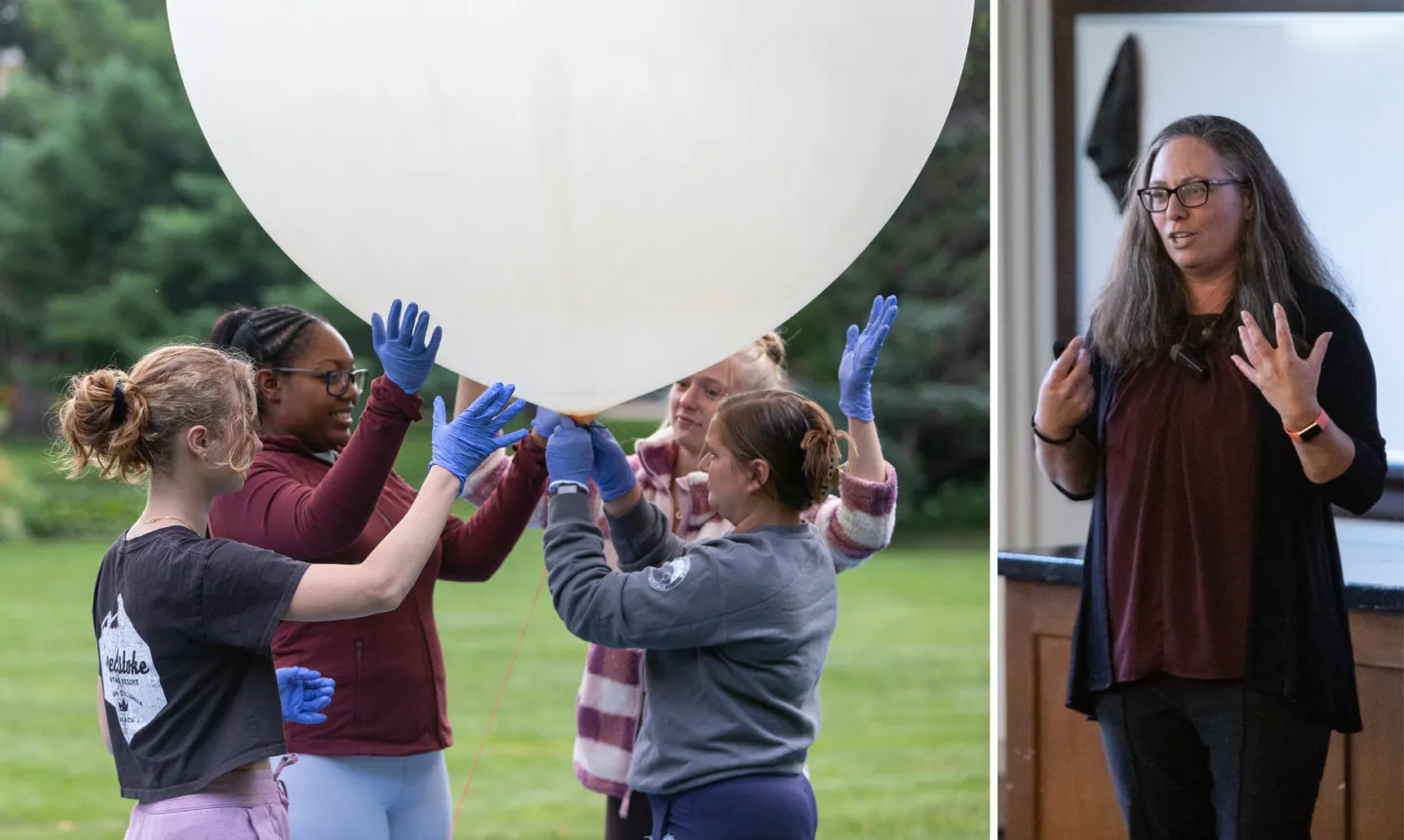
Four students assisting in the balloon launch (left) and visiting scholar Kelly Weinersmith, PhD (right).
Professor, scholar, and author Kelly Weinersmith, PhD, visited St. Catherine University last week to talk about research, STEM, and her second book, A City on Mars: Can We Settle Space, Should We Settle Space, and Have We Really Thought This Through? This visit, coordinated by Paula Furey, PhD, associate biology professor and Endowed Professor in the Sciences, was held over two days and featured a seminar on her scholarship, visits to classes and labs, a balloon launch, and a book lecture.
“We’re really excited to host Dr. Kelly Weinersmith. She exemplifies how women can excel and lead in STEM fields,” said Furey. “In A City on Mars: Can We Settle Space, Should We Settle Space, and Have We Really Thought This Through? Dr. Weinersmith and her co-author seamlessly blend biology, physics, and communication, illustrating the value of connecting interdisciplinary fields for our students.”
A distinguished scholar, Weinersmith’s research and writing has been featured in several publications including The Atlantic, National Geographic, BBC World, Science, and Nature. Weinersmith has also published two New York Times bestsellers with her husband and co-author, Zach Weinersmith. In 2024, the couple received a Hugo Award and the 2024 Royal Society Trivedi Book Prize for A City on Mars. The book was also short-listed for a 2023 Los Angeles Times Book Prize.
During her time on campus, Weinersmith held two seminars — one on her research in parasite host manipulation and another on A City on Mars — and engaged with students in a number of biology and physics classes and labs. Students had the opportunity to discuss the book and her scholarship, connecting them with topics relevant to their courses. Learning about Weinersmith’s journey as a scholar and author gave students the chance to creatively explore their own career interests.
The interdisciplinary approach that Weinersmith takes in her scholarship and writing is reflective of St. Kate’s strong emphasis on interdisciplinary work. For example, the new environmental and sustainability studies major launched this fall focuses on the complex relationship between environmental justice and sustainability. Co-developed by Furey, the major offers courses across a variety of disciplines and opportunities for community-engaged learning.
A highlight of Weinersmith’s visit was the balloon launch on the Quad, followed by a lecture based on the content of A City on Mars. The launch is tied to St. Kate’s recent collaboration with the National Eclipse Ballooning Project (NEBP) that took place during the 2023–24 academic year.
“As a part of this NASA-sponsored project, St. Kate’s was one of two all-women teams out of over 60 teams from around the nation. We were also one of fewer than 10 teams from non-Division 1 or 2 universities,” said Erick Agrimson, associate professor of physics.
At the event, NEBP alumni and current students assisted with the launch, using equipment to monitor what the atmosphere was doing in real time. This same equipment was available thanks to St. Kate’s collaboration with NEBP, and is similar to what the National Weather Service uses.
According to Agrimson, the physics topics course Ballooning and the Solar Eclipses hopes to have another launch conducted with students on November 18. The topics course aims to get students excited for the physics minor offered on campus. The Minnesota Space Grant Consortium provided development assistance for the course, and offers connections and scholarships for students involved.
All photos by Patrick Clancy.
